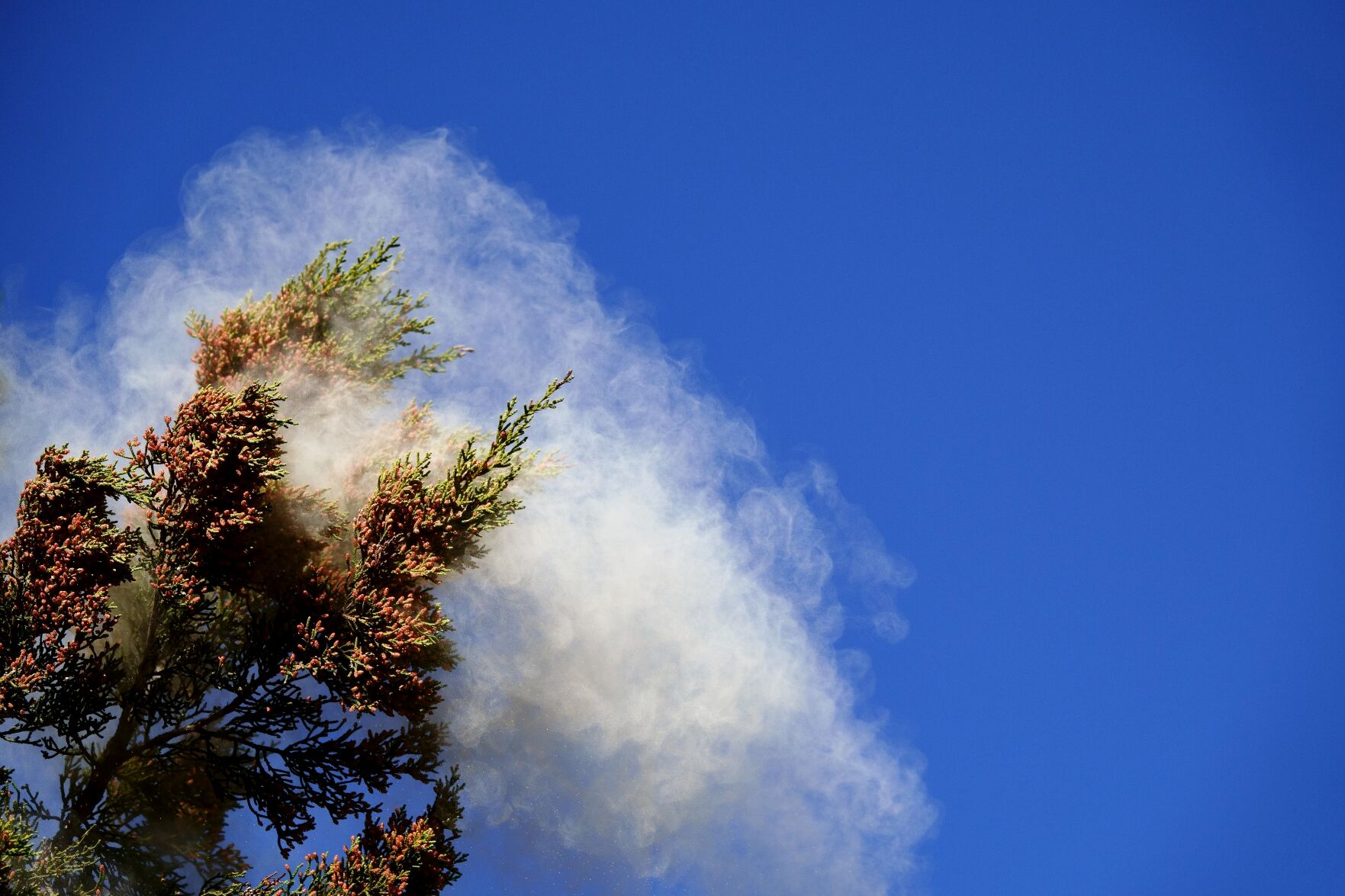Cedar fever back in Central Texas

If youâve taken a country drive in central Texas, or if youâre familiar with the landscape of Fort Hood, you have noticed forested slopes of mesas and canyons. Most of those dark evergreen trees are cedars, also known as mountain cedar or Ashe juniper. About half of them are beginning to change color â and not because of a change in season. Soon, local allergy sufferers will wisely stock up on allergy antidotes and try to avoid the great outdoors.
From about December to February cedar trees take advantage of any wind to get pollinated. The males, laden with amber-hued limbs, release copious amounts of microscopic pollen, which from a distance looks like an off white puff of smoke. The females produce purple berries (actually cones) in which they receive pollen. Wind pollination is effective but very inefficient, as most of it gets wasted â leaving a yellow film on our cars, windows, and outdoor furniture. Inevitably some pollen grains also end up in our sinuses, resulting in the allergic reaction known as âcedar feverâ that some of us experience â watery eyes, congestion, sneezing. Though the pollen has no scent, all other parts of the tree exude an oily resin that gives off a pleasant cedar-like aroma, especially when cut. Of course, smelling the volatile oil will not induce an allergic reaction.
Related Keywords
Fort Hood , Texas , United States , Sugarloaf , Smith Mountain , Brookhaven , Csergio Campos , Cultural Resources Management Branch , Fort Hood Fire Department , Fort Hood Fire Department Chief , Central Texas , East Range Road , Live Fire , Though Smith , Scott Summers , கோட்டை ஹூட் , டெக்சாஸ் , ஒன்றுபட்டது மாநிலங்களில் , சர்க்கரை ரொட்டி , ஸ்மித் மலை , ப்ரூக்ஹவன் , செர்ஜியோ காம்போஸ் , கலாச்சார வளங்கள் மேலாண்மை கிளை , கோட்டை ஹூட் தீ துறை , கோட்டை ஹூட் தீ துறை தலைமை , மைய டெக்சாஸ் , கிழக்கு சரகம் சாலை , வாழ தீ , என்றாலும் ஸ்மித் , ஸ்காட் கோடை காலம் ,
comparemela.com © 2020. All Rights Reserved.